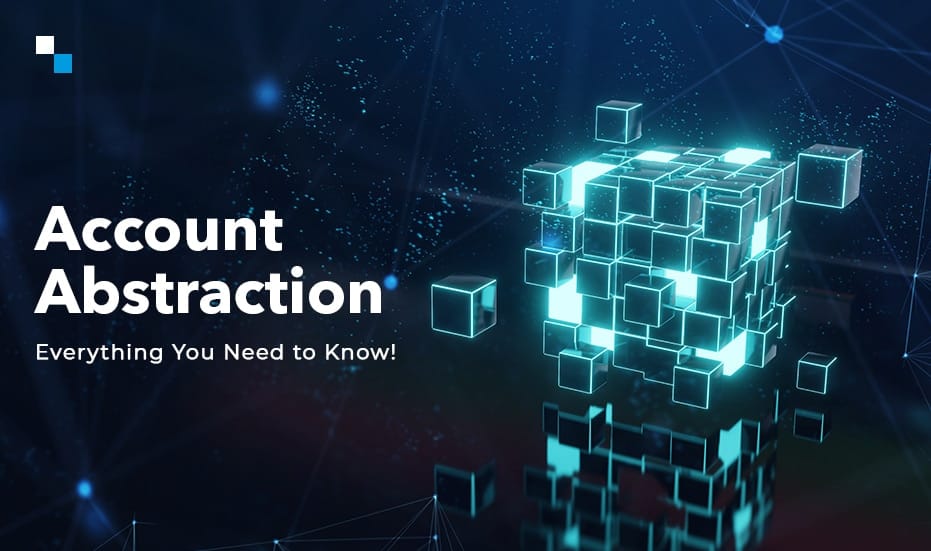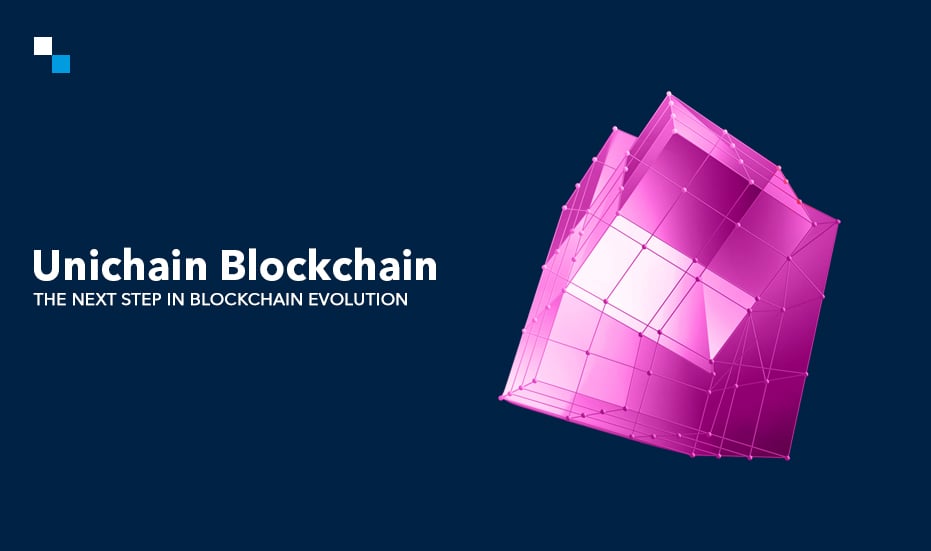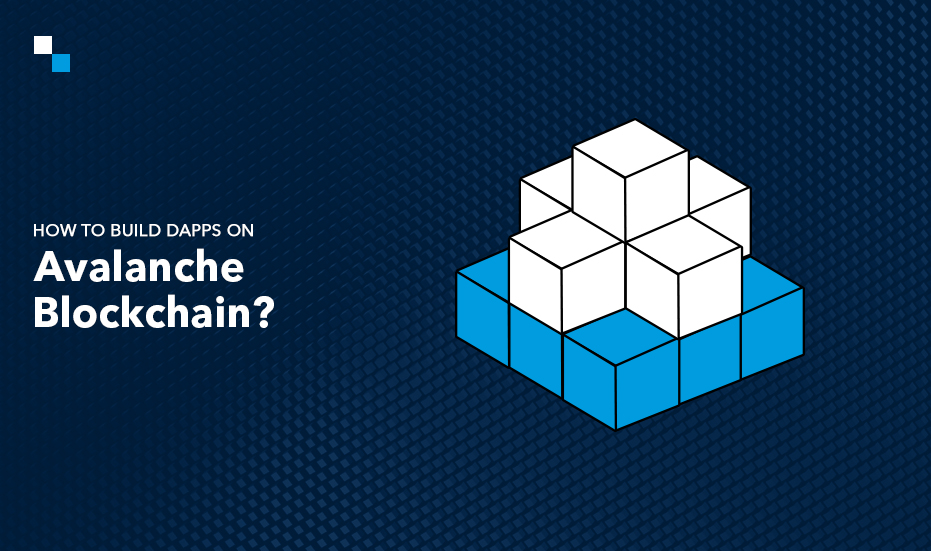
Top 12 Reasons to Choose Ethereum for Crypto Coin Development
September 20, 2023
What is Timesharing NFT? Exploring the Potential Use Cases
September 21, 2023The Blockchain industry encounters countless innovations and one of the latest advancements gaining the attention of crypto enthusiasts worldwide is the “Account Abstraction.” It is one such concept that may sound technical, however, holds the potential to make Ethereum Blockchain (one of the world’s most used and popular Blockchain platforms) more flexible and user-friendly. Account Abstraction Development is a fundamental concept that is redefining the way users interact with Ethereum.
In this blog post, we’ll delve into Blockchain account abstraction, its key features, benefits, and working.
Understanding Account Abstraction
Account abstraction offers ease to users to customize their experience with Ethereum Blockchain depending on their needs. Users usually interact with Ethereum using an Externally Owned Account (EOA) associated with one unique private key. Anyone having the private key can perform arbitrary transactions without any restrictions.
ERC-4337 standard or Ethereum Account abstraction offers more control as it allows assets to be exclusively held by smart contracts rather than being controlled by EOAs. It unlocks the power of smart contract crypto wallets on the Ethereum Blockchain.
How Ethereum Accounts Work
In order to understand the impact of Blockchain account abstraction or ERC4337, it is imperative to know how accounts work in Ethereum. There are two different types of accounts in Ethereum-
– Externally Owned Account (EOA)
– Smart contract account
- Externally Owned Accounts
This type of account is used by most crypto wallets to hold cryptocurrencies, store NFTs, and interact with smart contracts on the Blockchain. On Ethereum, EOAs are controlled by public/private keys. The private key is used to sign the transactions digitally, which is further verified using the public key. The private key provides control over the account, and if this key is stolen, the attackers can misuse the key, performing transactions on your behalf. If the key is lost, the user will be unable to retrieve the content of the account.
- Smart Contract Accounts
A smart contract account, also known as a “contract account” is a type of account on Blockchain that represents a self-executing computer program. Unlike EOAs, which are controlled by private keys, smart contract accounts are controlled by the smart contract codes themselves. Ethereum is popular as several smart contracts, DeFi protocols, and projects are built on it.
Smart Contract vs EOA
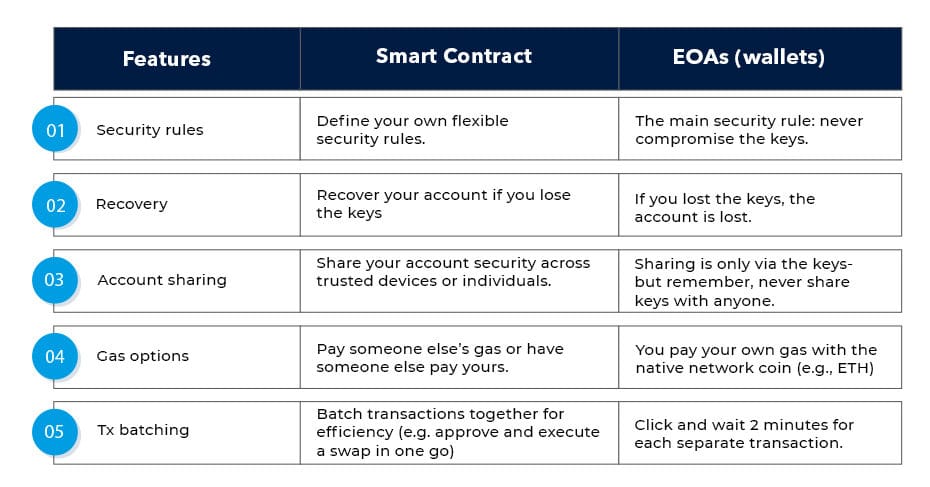
How Account Abstraction Works
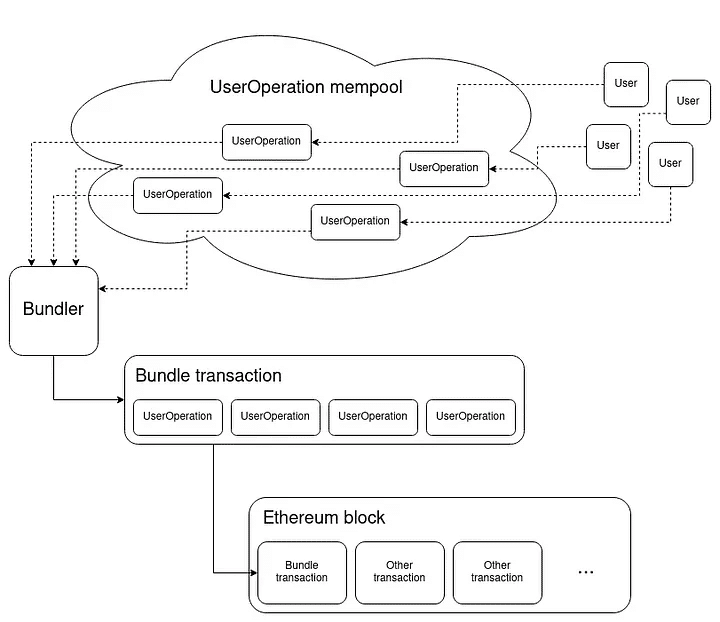
There are a number of key technical components of account abstraction development, including:
- UserOperation: The UserOperation is an ABI-encoded structure that provides details about the transaction initiated by the user.
- Bundler: The Bundler serves as a block builder. It bundles multiple UserOperation from the distinct UserOperation mempool and sends the bundle to the EntryPoint contract.
- Entry Point: The EntryPoint contract is a singleton smart contract on Ethereum Blockchain that manages the verification and execution processes of all bundles of UserOperations.
- Account Contract: The Account contract is the intelligent smart contract wallet that performs signature verification & processes transactions on the user’s behalf. The Account Factory contract is responsible for creating the Account contract.
- Paymaster: The Paymaster contract is an optional smart contract that can sponsor gas fees for user account contracts. This component enables users with no ETH for gas fee payment to still interact with Ethereum.
Key Features of Blockchain Account Abstraction
Below, we have discussed in detail how each dimension works.
– Signature abstraction
– Fee abstraction
– Nonce abstraction
- Signature Abstraction
EOAs use the ECDSA (Elliptic Curve Digital Signature Algorithm) for signatures associated with a private key. The funds are safe as long as the user has the private key. Losing the key to an EOA points to the unrecoverable asset loss. Signature abstraction enhances user experience integrating standard authorization for non-custodial accounts and removing the ECDSA signature. It allows users to establish their custom authorization rules for their wallets. Signature abstraction provides users full control along with a more flexible and secure transaction environment.
- Fee Abstraction
Every transaction on Ethereum needs a gas fee to be paid in Ether, Ethereum’s native cryptocurrency. It can be a blocker for newcomers who wish to acquire ETH to transact. Removing the gas fee requirement is not possible with Blockchain account abstraction. Therefore, it brings the concept of “sponsored transactions,” where another account covers the gas fee. Fee abstraction builds a more user-friendly Ethereum ecosystem that removes the blockers associated with gas fees and adds value to the user experience.
- Nonce Abstraction
Every transaction on Ethereum is considered “nonce” to ensure transactions are processed in order. Such a mechanism works on a strict first-in-first-out (FIFO) processing order that leads to “stuck transactions.” Instead of following the Ethereum protocol’s enforced transaction ordering, follow nonce abstraction as it allows the custom replay protection mechanisms. It enables parallel processing of multiple transactions that helps address the issue of stuck or delayed transactions.
Benefits of Account Abstraction for Users
Blockchain Account abstraction offers the following real benefits for users:
- Ease of Use: Account abstraction in Blockchain promotes sponsor abstraction that enables third-party developers or other parties to pay transaction fees on behalf of users. This feature makes Ethereum more user-friendly and encourages new users to on-board more seamlessly.
- Flexibility: Crypto account abstraction enables users to customize the rules of their transactions to perfectly match their requirements. It offers advanced features & security measures that aren’t possible with traditional transactions.
- Increased Security: Ethereum Account abstraction also makes way for various security enhancements, including account freezing and recovery, multi-signature control, transaction limits, and whitelist creation.
A Quick Overview on AA-related Ethereum Improvement Proposals
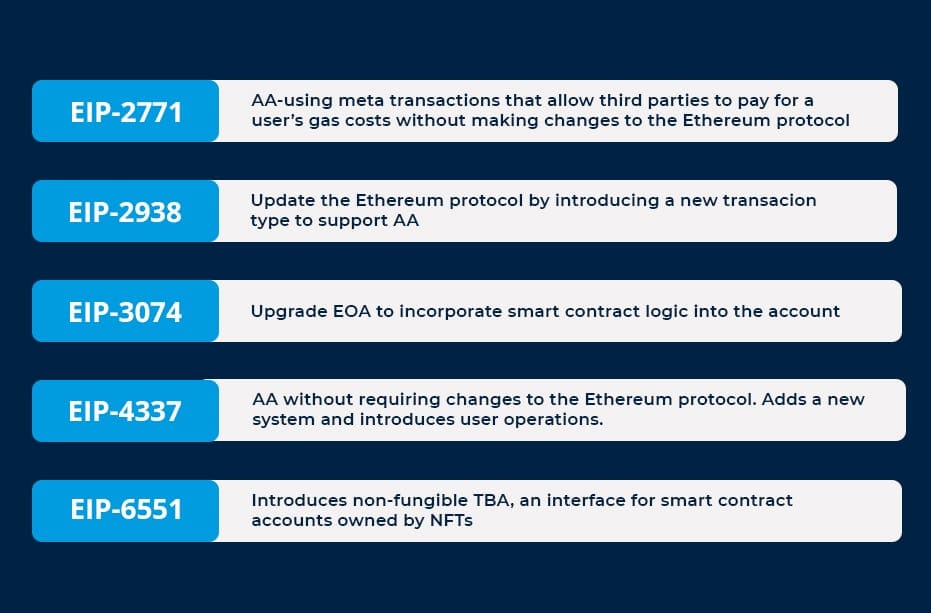
Account Abstraction Use Cases & Implications in Blockchain
Some of the capabilities of the Ethereum account abstraction include:
- Social Recovery
The traditional EOA is associated with private keys. If the private key is lost, the account will be lost forever. UserOperations in account abstraction perform differently. It allows an individual to regain access to an account in an account abstraction-compliant smart contract wallet through social recovery.
- ERC-20 Token Gas Payment
Earlier, a user had to pay their own gas fees in ETH to perform a particular transaction, even if the transaction doesn’t involve ETH. The Paymaster in account abstraction has made it possible for users to pay gas fees in any ERC-20 token.
- Off-chain Payment Methods
Paymaster also allows a user to make gas payments off-chain using subscriptions, credit cards, and other related popular means. It is completely different from the traditional EOAs off-chain payments that basically require handing over custody of the account.
- Alternative Authentication Methods:
The transactions in a traditional Ethereum are verified using the ECDSA. With Blockchain account abstraction, one can access different authentication methods, including multi-factor authentication (MFA), step-up authentication, and more.
- Session Keys
Ethereum transactions need to be digitally signed. Account abstraction in Blockchain generates ‘session keys’ that enable dApp to sign transactions on the user’s behalf during a session.
- Transaction Batching
An EOA utilizes nonce to enforce strict first-in-first-out (FIFO) ordering of transactions. However, crypto account abstraction encourages batched transactions, in which both approving and performing a token swap is done in a single transaction.

Conclusion
In a nutshell, Ethereum account abstraction has gained prominence in recent years due to its powerful selling point of customizing how users interact with Ethereum. Earlier, a certain level of technical knowledge was required to utilize Blockchain. However, with the introduction of ERC-4337, Web3 and Blockchain became more accessible to new users with limited knowledge.
Antier, a leading Blockchain development company, understands the potential of the core component of Web3 projects and account abstraction in Blockchain, and helps companies to integrate it into their projects. For any help with designing, implementing, and securing your Web3 infrastructure with ERC-4337 compatible solutions, connect with Antier today.
